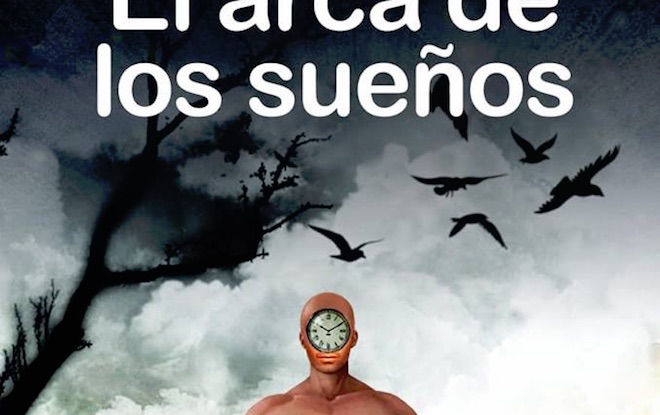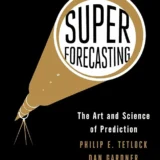 Two people stand inside an observatory, staring up at the sky. They have access to a large telescope, but they are not looking through it. The object that has caught their attention is clearly visible to the naked eye: a bizarre spacecraft, shaped like a lightbulb surrounded by a ring, its oval portholes glowing with orange light. It was October 1927, and Amazing Stories was on the newsstands again.
Two people stand inside an observatory, staring up at the sky. They have access to a large telescope, but they are not looking through it. The object that has caught their attention is clearly visible to the naked eye: a bizarre spacecraft, shaped like a lightbulb surrounded by a ring, its oval portholes glowing with orange light. It was October 1927, and Amazing Stories was on the newsstands again.
Hugo Gernsback’s editorial for the month is entitled “Amazing Youth”. He opens with thoughts on how many of the great inventors – Thomas Edison, Alexander Graham Bell, Lee de Forest and Edwin Howard Armstrong – came up with their innovations as young men. After praising the fresh outlooks of youth, Gernsback moves on to the younger members of Amazing’s readership.
“Once upon a time the youngsters read Indian stories, which were not at all educational”, he says; “nowadays it is scientifiction, which is an education in itself.” The editorial is illustrated with a photograph of a seven-year-old boy named Robert Smith reading a copy of Amazing. “At our office recently, this exceptional youngster astonished the editors when he freely developed his views upon scientifiction.” We learn that this lad was familiar with H. G. Wells, Jules Verne and Garret P. Serviss, and “preferred stories of space and of interplanetarian travel.”
Well, it sounds as though young Robert would have enjoyed the story that opens this issue of Amazing…
“Around the Universe” by Ray Cummings
 Originally serialised in Science and Invention magazine in 1923, this is one of several stories that Ray Cummings wrote about a character named Tubby Maguire.
Originally serialised in Science and Invention magazine in 1923, this is one of several stories that Ray Cummings wrote about a character named Tubby Maguire.
During a card game, Tubby gets into a dispute about astronomy with his friends. He denies that space cannot be infinite, and also brings up the possibility of life inside the Moon (“I read a book by a guy named Wells”). As the discussion continues Tubby wishes that he could learn something about astronomy – and then, lo and behold, a mysterious professor appears, announcing that he will teach Tubby all about the subject.
The professor introduces himself as Sir Isaac Swift DeFoe Wells-Verne. Tubby, having just discovered his miraculous wishing ability, wishes a slap-up feed and a nice pair of cigars for the pair of them. His gift now undeniable, Tubby then wishes himself and Sir Isaac into space – and then, lo and behold, an interplanetary space flier descends from the sky.
The pair travel into space, and Tubby soon realises that his wishing ability no longer works – as the professor explains, he is now in the realm of cold, hard science, and such childish magic has no place. They land on idyllic Venus, where a beautiful Venusian maiden named Ameena. She tells them that the inhabitants of Mars are plotting to invade Earth, aided by “rebels from the Twilight Country of Mercury”; the peaceful Venusians, meanwhile, turned down the opportunity to be allies in this invasion. They have already succeeded in conquering Earth’s Moon, and it will be only two months before they make their move against the third planet.
Ameena joins the two astronauts on a voyage to Mercury, where they hope to enlist the aid of the planet’s Light Country, who are no friends of the Martians. Alas, the Mercurians decline to get involved in interplanetary affairs, and the gigantic inhabitants of Jupiter are similarly reluctant. The travellers pass the uninhabited planets of Saturn, Uranus and Neptune and later (having “left the Solar System behind them and launched themselves boldly into the uncharted realms of Inter-stellar Space”) reach Alpha Centauri.
The journey takes the ship to the very edge of the universe – and in doing so, proves the professor’s theory that the universe is but one atom in another, much larger universe. The professor also announces that he has hit upon a way of saving Earth without extraterrestrial aid, and so heads back to put his plan into action.
After an attempted suicide attack from some rogue Mercurians (who end up colliding with an asteroid rather than the heroes) the professor uses the craft to knock two asteroids together. This kicks off a domino effect that eventually leads to a massive, blazing asteroid colliding slap-bang into Mars, potentially wiping out all life on the planet. The heroes spare a thought for the Martian civilians who perished in this attack, before Tubby and Ameena begin discussing their wedding preparations.
Back on Earth, Tubby regains his wishing ability. He decides to use it to play a prank on his old enemy Bill Hawkins: “I wish the earth was revolvin’ twice as fast as usual, so Bill Hawkins’ house would fly off in the air”. This leads to predictable disaster, and Tubby wishes that he had never had the power to wish in the first place… and so ends up back in that argument over the game of cards, his adventures wiped from history.
“Around the Universe” varies wildly in tone, with the professor’s lengthy detailed astronomical calculations existing alongside the out-and-out fantasy of Tubby’s wish-fulfilment power. But it gets away with this element of incoherence due to its unabashed intertextuality: the tale celebrates science fiction in all the genre’s disparate forms. The analytical adventuring of Verne, the mythic romance of Burroughs, the humours of Wells and even the scale-changing journeys of Swift can be glimpsed here.
In the story, science fiction is personified as Sir Isaac Swift DeFoe Wells-Verne. This character is not merely named after various authors – he is those authors, having written everything from Gulliver’s Travels to The War of the Worlds under sundry variations of his elaborate monicker. (One scene, which now reads as an amusing bit of irony, has Tubby point out that he has never seen the name “Isaac” used on any of the professor’s science fiction books. A generation down the line, Isaac would be one of the biggest names in SF!)
In particular, the story contains multiple homages to H. G. Wells: the invading force is described as including “tremendous war-machines of the Martians–giant mechanical bodies housing the Martian directing brain in their tops–mechanisms with metal legs like steel girders fifty feet long” in a direct lift from The War of the Worlds, while Tubby’s wishing ability comes from “The Man Who Could Work Miracles” (Tubby is even stated to have got the idea for his final prank from “that similar situation Sir Isaac once conceived under his favorite ‘Herbert George’ name”).
As an early example of intertextual science fiction, “Around the Universe” is intriguing evidence of how self-aware science fiction was even during this period.
“Æpyornis Island” by H. G. Wells
 This 1894 story begins with the narrator meeting a traveller who recounts the tale of reaching an island where he found eggs of the Æpyornis, or elephant bird – a species thought extinct. But the racially-prejudiced traveller ended up getting into a row with his “heathen” companions, who subsequently tried to leave without him. He responded by killing them and setting off in the canoe alone, with the three eggs on board. He was forced to eat two of them during his journey; after he found land, the remaining egg hatched into an Æpyornis chick which he named Man Friday. At first the sailor was delighted with his companion, but as the chick grew, its attitude towards him soured (“Here was this extinct animal mooning about my island like a sulky duke, and me not allowed to rest the sole of my foot on the place.”) He was finally forced to kill the gigantic bird – and was subsequently stricken with remorse.
This 1894 story begins with the narrator meeting a traveller who recounts the tale of reaching an island where he found eggs of the Æpyornis, or elephant bird – a species thought extinct. But the racially-prejudiced traveller ended up getting into a row with his “heathen” companions, who subsequently tried to leave without him. He responded by killing them and setting off in the canoe alone, with the three eggs on board. He was forced to eat two of them during his journey; after he found land, the remaining egg hatched into an Æpyornis chick which he named Man Friday. At first the sailor was delighted with his companion, but as the chick grew, its attitude towards him soured (“Here was this extinct animal mooning about my island like a sulky duke, and me not allowed to rest the sole of my foot on the place.”) He was finally forced to kill the gigantic bird – and was subsequently stricken with remorse.
With “Æpyornis Island” Amazing Stories once again takes readers to a lost world of prehistoric creatures – this time in a short, blackly comical take on the theme, showing Wells’ knack for dry humour.
“The Paradise of the Ice Wilderness” by Julius Regis
 In this story by Swedish author Julius Regis (misidentified as Norwegian by the editorial introduction) explorers in the north of Siberia find a mammoth preserved in the ice. They thaw it out, and realise that it is so miraculously preserved that it bleeds when cut. Moving on, they reach a cavern filled with various bones. Gradually, it dawns on them the cavern is inhabited by species thought extinct – at which point they are confronted by a dinosaur, and flee.
In this story by Swedish author Julius Regis (misidentified as Norwegian by the editorial introduction) explorers in the north of Siberia find a mammoth preserved in the ice. They thaw it out, and realise that it is so miraculously preserved that it bleeds when cut. Moving on, they reach a cavern filled with various bones. Gradually, it dawns on them the cavern is inhabited by species thought extinct – at which point they are confronted by a dinosaur, and flee.
Another tale of prehistoric survivals, and an even briefer one than “Æpyornis Island”. “The Paradise of the Ice Wilderness” lacks the humour of Wells’ tale or the wide-ranging adventure of Jules Verne and Edgar Rice Burroughs’ lost world stories. It is content simply to introduce the idea of dinosaurs and mammoths existing in remote climes, and builds a short but effective story around the idea.
Treasures of Tantalus by Garret Smith (part 1 of 2)
 Originally serialised in Argosy All-Story Weekly between 1920 and 1921, this novel begins on 31 December 1999. Wealthy heir Tom Priestley faces the loss of his fortune due to an impending change of laws regarding inheritance; his only hope is to obtain signatures from long-lost cousins. The protagonist, a newspaper reporter named Blair, decides to track down Priestley and finds him at the laboratory of one Professor Fleckner, “inventor of the deadly violet ray destroyer” (this doomsday weapon, we are told, has guaranteed world peace through the threat of mutually assured destruction).
Originally serialised in Argosy All-Story Weekly between 1920 and 1921, this novel begins on 31 December 1999. Wealthy heir Tom Priestley faces the loss of his fortune due to an impending change of laws regarding inheritance; his only hope is to obtain signatures from long-lost cousins. The protagonist, a newspaper reporter named Blair, decides to track down Priestley and finds him at the laboratory of one Professor Fleckner, “inventor of the deadly violet ray destroyer” (this doomsday weapon, we are told, has guaranteed world peace through the threat of mutually assured destruction).
Fleckner, it transpires, has another invention up his sleeve: a telephonoscope, that is, “a radio apparatus that not merely brought the human voice or any other ordinary sound from the remotest quarter of the globe, but caught the scene and projected it on a screen”. This machine needs no transmitting station, and can screen literally anything in the world over directed “ether waves”.
Priestley agrees to help finance this machine on the condition that he be allowed to use it that night to track down his cousins and project his own image in front of them, allowing him to ask for their consent on the matter of inheritance. He does so, but also gets distracted by another matter: a ship under attack by “lawless Bolshevic refugees from the rehabilitated Republic of Russia”. Priestley arranges for the assembled observers to be armed with guns and projected into the fray so as to scare off the attackers, but the professor dismisses this as a waste of time. Only after Priestley holds him at gunpoint does Fleckner allow his invention to be used to save lives.
Despite this altercation, Fleckner manages to cajole Priestley into acting as his business partner, appealing to the latter’s humanity by asking him to help prevent the telephonoscope from falling into the wrong hands.
Later, Priestley teams up with protagonist Blair in the hopes of using the telephonoscope to take down a crime syndicate (low-level crime has been eradicated in this future – “We’ve proved in the last hundred years that the criminal is a man or woman with a defective type of mind” says Priestley – leaving only an alliance of criminal masterminds). Spying on a corrupt judge named Theron B. Tanner who turns out to be a syndicate leader, the pair learn that the criminals rigged a recent election to establish one of their number – Mortimer Chandler – as president-elect. The seemingly amoral Fleckner shows little interest in halting these crimes, but he is nonetheless intrigued by the existence of the syndicate’s stockpile of ill-gotten wealth…
So far, The Treasures of Tantalus is a novel with two main concerns: first, the ethical implications of its all-seeing television device; and second, the criminal process that threatens to turn a utopia into a dystopia. At the same time, it manages to include some leftish political commentary on the side: “Though we could get no positive evidence as to which of the two other parties had the backing of the crime trust, our reason told us it was the Conservative. That party had fought, step by step, the legislative restrictions on the accumulation of private fortunes.”
“The Winged Doom” by Kenneth Gilbert
 One of America’s military secrets, a levitating substance called coridium (shades of H. G. Wells’ cavorite), has been stolen by an agent of an unspecified foreign power. After taking to the skies, the agent has a run-in with an airborne criminal known as The Kingbird, who despite his outlaw status maintains a patriotic loyalty to America. This is the start of a conflict between opposing fleets of American and enemy planes, during which The Kingbird uses suction cups attached to his craft to capture one of the foreign vehicles. To the outlaw’s surprise, it turns out that the plane he has captured contains none other than the Crown Prince of the foreign power. The battle of wills between the outlaw and the prince ends with the enemy retreating.
One of America’s military secrets, a levitating substance called coridium (shades of H. G. Wells’ cavorite), has been stolen by an agent of an unspecified foreign power. After taking to the skies, the agent has a run-in with an airborne criminal known as The Kingbird, who despite his outlaw status maintains a patriotic loyalty to America. This is the start of a conflict between opposing fleets of American and enemy planes, during which The Kingbird uses suction cups attached to his craft to capture one of the foreign vehicles. To the outlaw’s surprise, it turns out that the plane he has captured contains none other than the Crown Prince of the foreign power. The battle of wills between the outlaw and the prince ends with the enemy retreating.
The subject matter of this story was possibly influenced by H. G. Wells’ The War in the Air, but where Wells offered a grave warning, Kenneth Gilbert is more concerned with giving his readers a pulpish romp about a noble outlaw of the air. The Robin Hood archetype is brought into a science fiction world of telepathy, atomic bombs and death rays.
Discussions
This month’s letters column is as lively as ever. Allen Lucy sends a clipping from the Palto Alto Times about a child whose internal organs were reversed, recalling the conclusion to H. G. Wells’ “The Plattner Story”, while librarian William G. Hale praises Hugo Gernsback’s editorials as an antidote to “all those dry-as-dust professors who decry the possibility of life and intelligence on other worlds”
Hugo Gernsback’s editorial on the magazine’s younger readers is complemented by a trio of letters from enthusiastic teenagers. 15-year-old Frederick W. Weihe thanks the magazine for helping him to handle his science lessons, and 13-year-old Howard M. Blake praises Amazing before requesting Ray Cummings stories. 19-year-old Holger E. Lindgren develops an idea from an earlier issue’s letter regarding a “Young Man’s Science Club”; the magazine responds by inviting readers to express their interest in joining such a group.
Earl B. Brown, hails Abraham Merritt as “the master of scientifiction” but expresses difficulty enjoying the H. G. Wells stories set in the nineteenth century, as their futures are now in the past: “here’s a tip to present scientifiction authors—date your stories far enough ahead that they won’t grow to have this flaw.” Herbert I. Pickett objects to George R. Fox’s “The Electronic Wall”: “The globe which lifts the ship… is supposed to be a miniature world. On the contrary anyone could see that it is something made by intelligent beings. Don’t you think that it would have been better for the writer to have said that it was some kind of a flying machine sent by the beautiful women of Mars to bring back that shipload of men?” Australian reader John Cooke points out that two stories made errors in Antipodean geography, before requesting that Amazing run a story by H. Rider Haggard entitled “When the Earth Shook” (Haggard never actually wrote a story by this name, rendering Cooke’s letter something of a mystery).
Aside from the above, this issue’s letters contain little in the way of comments on scientific plausibility in stories; this must have pleased C. P. Prescott, whose letter objects to this practice: “Some of the amateur experts’ opinions really serve as a comic sequel after a night of interesting reading.” Prescott goes on to request a reprint of Marie Corelli’s A Romance of Two Worlds;meanwhile, Hector Gratton from Quebec requests that the magazine run translations of French-language SF stories: Henri Perchon’s “Les Hommes Frenetiques”, Cmdt. De Wailly’s “Le Monde de L’Abine” and H. d’Allorge’s “Le Grand Cataclysme”.
Catherine M. Moran asks for Camille Flammarion’s Urania and Lord Lytton’s The Coming Race, also giving an account of a disagreement she had with a friend about the magazine: ”He said that for him it was growing stale, he was surfeited with interplanetary stories. I feel that he is the one to be criticized.” “Theodore Roosevelt’s unknown river was in South America”, writes the editorial reply to this letter. “We fear out correspondent has found hers in our Amazing Stories.”
The August issue’s announcement that Amazing Stories was struggling to make a profit prompted a round of suggestions from the readership. John J. Kelly, Jr calls for readers to try and get their friends buying the magazine.
P. A. Simrow, after announcing his plan to keep a note-book of scientific findings related to Amazing’s stories, suggests that the magazine run more illustrations to give potential readers a better idea of its contents. “Many people seem to think that Amazing Stories is a magazine of blood-curdling stories of which nightmares are made”, he says. This is an interesting reminder of how the scientific leanings of Amazing Stories marked it out in a field dominated by the more horror-oriented Weird Tales and Ghost Stories. John S. Williamson makes similar comments: “Few of my friends will read Amazing Stories”, he writes. “They look upon the stories as mere sensational thrillers, not as imaginative searchlights penetrating into the black void of the unknown that surrounds our narrow sphere of knowledge.” Likewise, he suggests additional illustrations. Raymond Jaureguy objects to the number of Science and Invention reprints, including this issue’s Ray Cummings story, on the grounds that Amazing’s readers will likely also have been following that magazine.
Earl G. Sarason discusses humour in science fiction. While he speaks approvingly of the satirical elements of Edgar Rice Burroughs’ The Master Mind of Mars, he complains that “to base a whole series of stories on the antics of a hare-brained inventor, is a little too much for the discriminating reader” and pours particular scorn on “the so-called ‘humorous’ effusions of E. D. Skinner and H. H. Simmons”:
Mr. Skinner, as yet, has offended but once; and so we will dismiss him from consideration with a gentle admonition to “go and sin no more.” But Mr. Simmons’s case is different. Were the concoction of allegedly humorous scientifiction punishable by law, I am sure that this author would be send up for life, while you, Mr. Editor, would no doubt be sentenced to ten years at hard labor as a wilful accomplice to the crime.
“[W]e are inclined to take the view that your criticism is not really constructive”, reads the editorial reply.
Read My Profile









